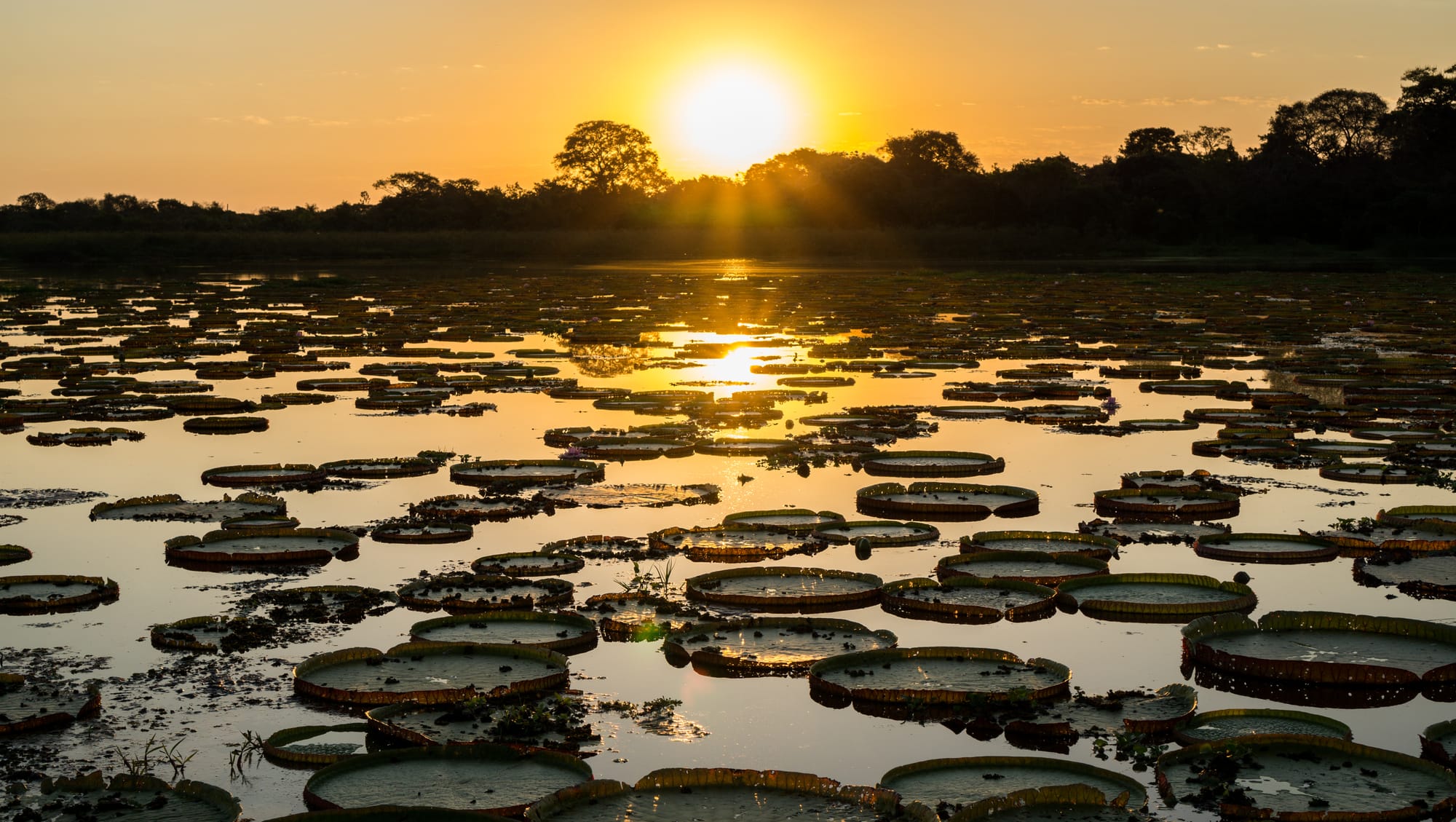Pantanal is a terrestrial ecoregion of South America, consisting of large rivers, lakes, and ponds. Its name comes from the Portuguese word \pântano,\ which means swamp. Although not as well known as the Amazon rainforest, this gigantic floodplain is home to many plants and wildlife.
The Pantanal Plateau fills up gradually during the ►
Pantanal is a terrestrial ecoregion of South America, consisting of large rivers, lakes, and ponds. Its name comes from the Portuguese word \pântano,\ which means swamp. Although not as well known as the Amazon rainforest, this gigantic floodplain is home to many plants and wildlife.
The Pantanal Plateau fills up gradually during the rainy season before emptying itself little by little during the dry season. That\'s why you have to be careful about the time of the year you plan to go there!
Indeed, it is primarily flooded between December and May, so mosquitoes increase, which can be very annoying.
If you want to visit the northern zone, it is better to fly to Cuiabá. This region is located at a high altitude, meaning the flood plains are narrow and the forest areas dense. The vegetation is lush and thick. It is characterized by a very long dry season, which lasts from May to September, and a shorter rainy season.
In this area, you will be able to admire some animal species, including :
- Jaguars,
- Hyacinth macaws, the largest parrots in the world;
- Giant river otters,
- Howler monkeys, anteaters, armadillos, and swamp deer.
However, if you want to visit the southern part of the Pantanal, the fastest way is from Campo Grande, the capital of south Mato Grosso. This area has a long rainy season, which lasts from November to March, and a short dry season.
This region is flat and extensive, with vast open plains, large swampy areas, and sparse vegetation. Because of this different topography, the fauna and flora of the southern Pantanal can vary considerably from those of the northern Pantanal. You will be able to admire landscapes of dense forest, narrow plains, and vast landscapes with different fauna and flora, including:
- Anacondas,
- Caimans, red ibis, jabiros storks, red-handed tamarins and piranhas.
There are several options for getting to the two areas of the Pantanal. One exciting opportunity is to rent a car on-site and do the trip yourself. It takes about four hours to get there from the nearest town. It is a recommended experience if you want to have more autonomy on this adventure.
The cuisine is mainly based on local products, such as fish, beef, cassava, and fruits from the forest.
Taste local dishes like \pintado na brasa\ in restaurants in the towns of Corumbá and Bonito in the south or Miranda in the north of the region.
In both areas, boat trips are offered. Piranhas and caimans are the main attraction of the river (do not get too close!).
On horseback, you can reach hard-to-reach areas while observing animal life differently.
Suppose you want to immerse yourself in the culture. In that case, the traditional music of the Pantanal is the \cururu,\ a musical genre of African and indigenous origin, which is played with instruments such as the \viola de cocho\ (a type of guitar), accordion, and flute.
◄
